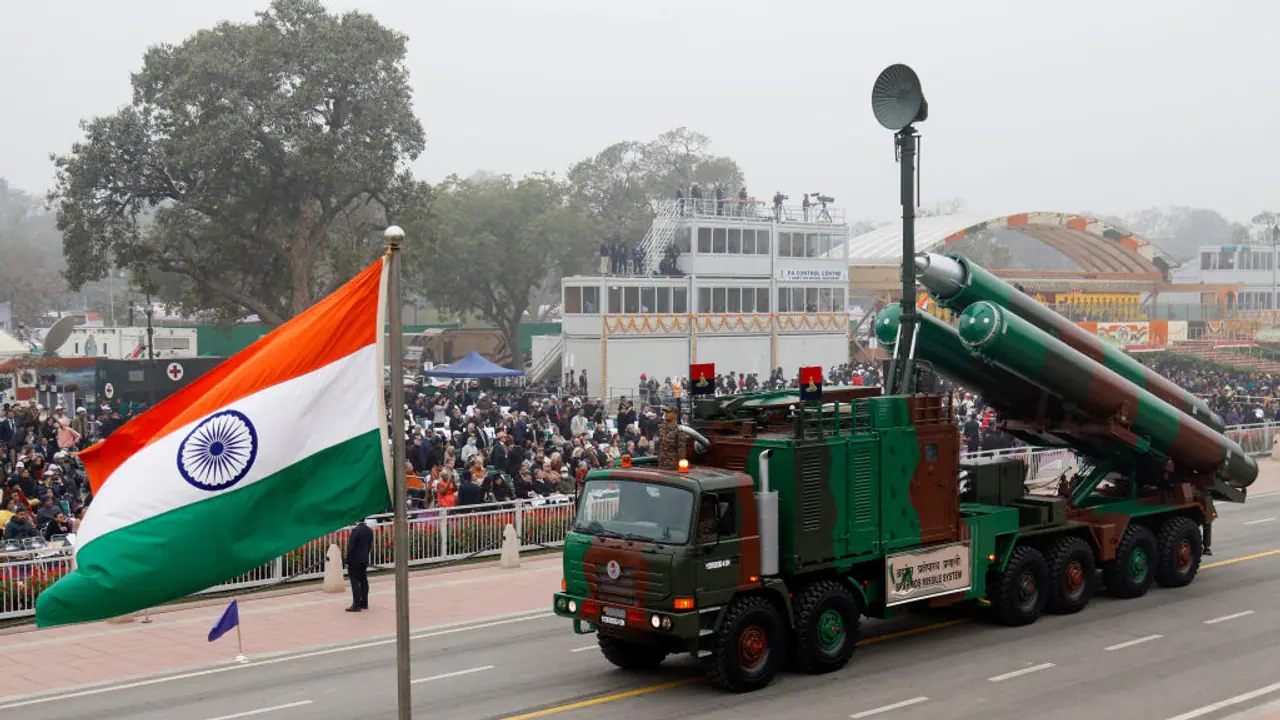“The global demand for these Indian-manufactured defence assets has soared exponentially in the aftermath of this landmark operation,” writes Dr.(Er.) Subodha Kumar Rautaray.
A Geopolitical analysis by Dr.(Er.) Subodha Kumar Rautaray: The entire world has now witnessed the resurgence of India’s defence prowess — a nation that executed a sophisticated military operation without firing a single bullet. More than ten satellites were deployed to monitor the entire mission in real-time. Indigenous war missiles such as BrahMos and Agni, in collaboration with the highly advanced air defence systems like Akash and the Russian-made S-400, have now become the focal point of international defence discourse.

The global demand for these Indian-manufactured defence assets has soared exponentially in the aftermath of this landmark operation to provide perspective — India’s defence exports stood at a modest Rs 1,900 crore in the financial year 2013–14. This figure has since surged to Rs 24,000 crore by the close of the financial year 2024–25.
The initial target was to elevate this to Rs 50,000 crore by 2029. However, in the wake of Operation Sindoor and the unprecedented statement made by Pakistan’s Prime Minister, Shehbaz Sharif, in Azerbaijan on 29th May — wherein he officially acknowledged India’s surgical strikes on multiple Pakistani airbases, including Rawalpindi, using BrahMos missiles on the night of 9th May — the global demand curve for Indian-made defence equipment has risen sharply. It is now highly probable that the target set for 2029 will be achieved well ahead of schedule.
Unsurprisingly, this turn of events has not been well received by traditional defence superpowers. Dominant players like the United States, Canada, and leading European nations such as France, Germany, and Great Britain — long accustomed to their stranglehold on the global defence market — are finding it difficult to accept India’s rapid ascendancy. They are wary of India achieving self-reliance in defence production and encroaching upon their established export markets.
Despite their efforts to deter India’s rise, the nation is poised to secure a formidable position in the global defence export arena. The United States, which currently holds a staggering 43% share of the global arms export market, has covertly ensured control over Pakistan’s nuclear arsenal to maintain its strategic dominance in East Asia. This explains how Pakistan continues to secure IMF loans and acquire F-16 fighter aircraft from the US, despite India’s persistent diplomatic protests. Moreover, despite undeniable evidence of Pakistan’s continued patronage, protection, and financing of terrorist networks on its soil, it remains shielded from international censure and has yet to be officially designated as a terrorist state.
In a candid interview not long ago, Pakistan’s Defence Minister, Khawaja Asif, openly confessed to these harsh truths — even disclosing the involvement of the US and certain
Western nations in enabling and supporting such activities. The killing of Osama bin Laden by American forces near a Pakistani military cantonment stands as a stark testament to Pakistan’s duplicitous support for terrorism. Yet, in the face of such damning evidence, the United States has consistently refrained from taking decisive action against Pakistan.
For decades, the US has exerted influence over Asian nations, leveraging its military might to assert supremacy. It now finds itself deeply unsettled by India’s emergence as a formidable force in the region. Already engaged in geopolitical contestations with Russia and China, the US is unwilling to see India enter this exclusive circle of defence superpowers.
Consequently, before India could successfully neutralize Pakistan’s nuclear capabilities, the US administration intervened to obstruct such plans — not out of altruism, but to safeguard its sponsored nuclear assets in Pakistan and to preserve its strategic dominance across Asia.
Whether it’s Joe Biden or Donald Trump, both are but two faces of the same coin. Neither has proven a genuine ally to any nation; their diplomatic overtures are invariably driven by self-interest. Their strategy has long been to install pliant governments — puppet regimes they can manipulate, as recently observed in Bangladesh.
However, unlike Pakistan, modern India has demonstrated unyielding resilience, erecting formidable barriers against such hegemonic ambitions. It is evident that both the US and China are engaged in a fierce contest to win the allegiance of Asian countries. The US administration views Pakistan and Bangladesh as easy pawns in this geopolitical chessboard.
Yet, much to their dismay, a modern, resurgent India — steadfast in its vision of becoming Vishwaguru by 2047 — stands unbowed and resolute, far from succumbing to their designs.
(Dr. (Er.) Subodha Kumar Rautaray, a PhD in Civil Engineering with M-Tech and MBA, is a former leader in national volleyball and women’s football associations. An ex-president of Rotary Club, Cuttack East, he is also a committed social worker, philanthropist, and passionate gardener. You can read him at: subodhroutray@yahoo.co.in)
Disclaimer: The opinions expressed are solely those of the author and do not reflect the views or stance of the organization. The organization assumes no responsibility for the content shared.


